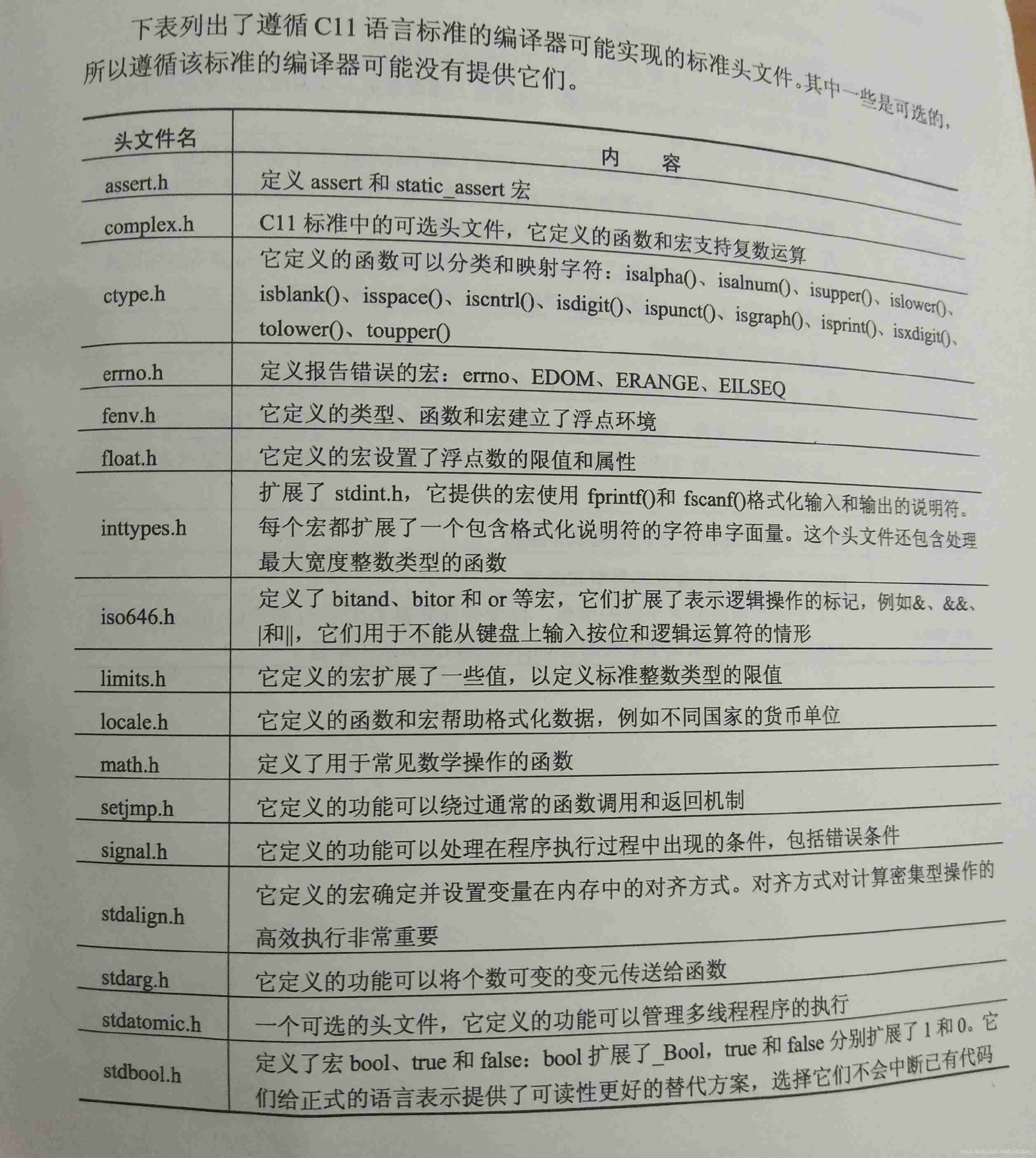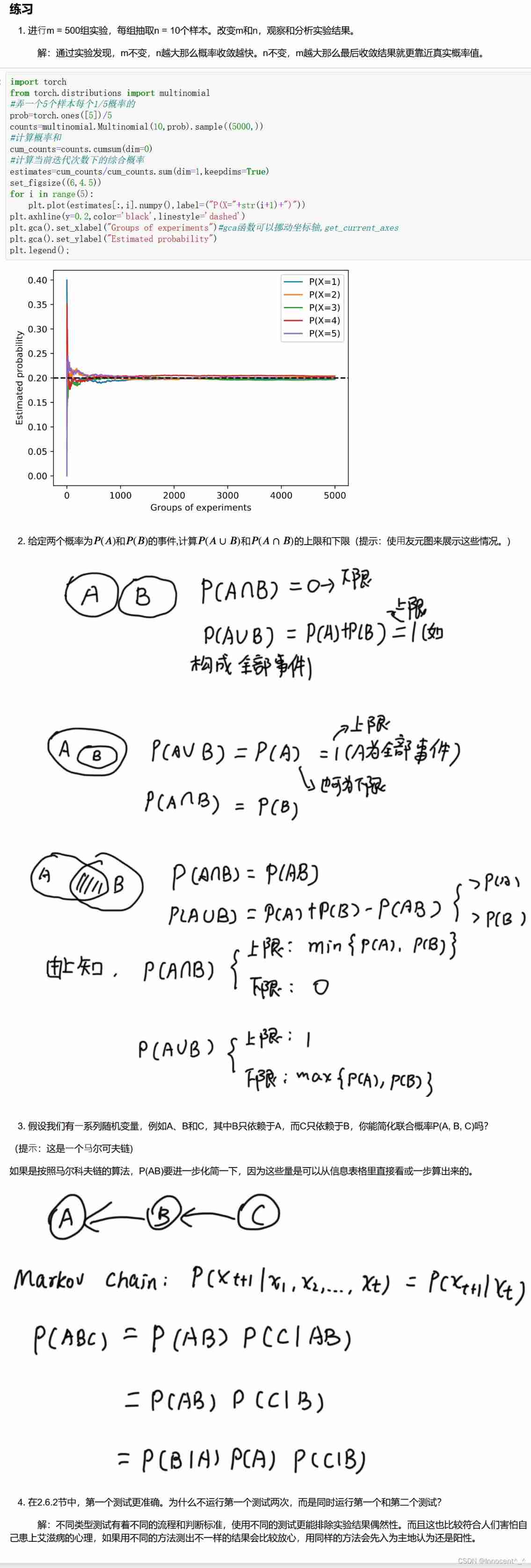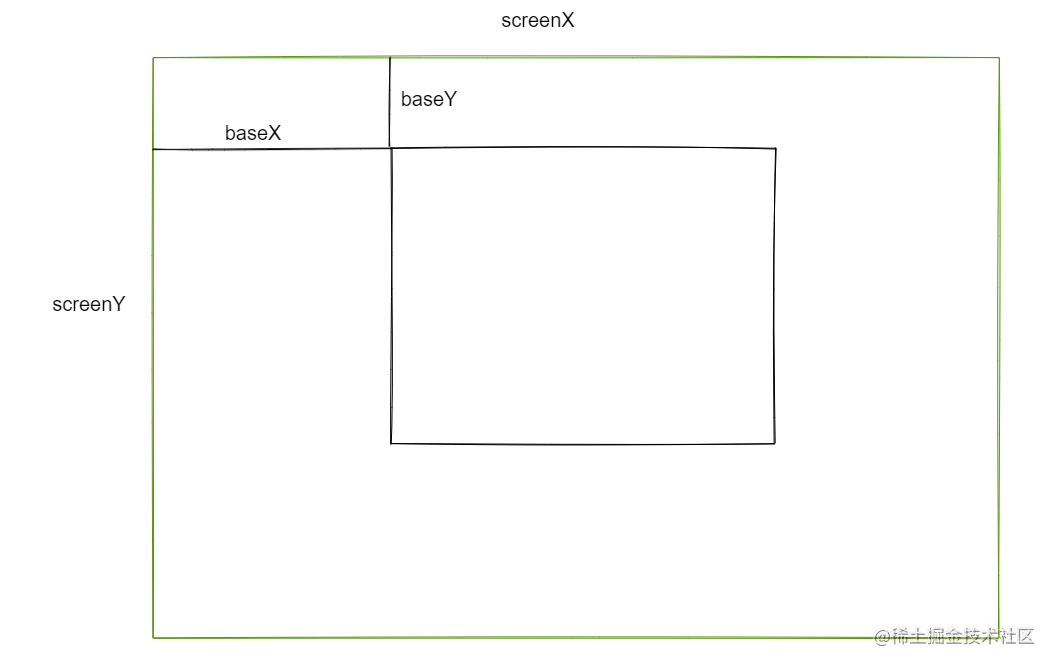当前位置:网站首页>丢弃法Dropout(Pytorch)
丢弃法Dropout(Pytorch)
2022-07-03 09:27:00 【-素心向暖】
丢弃法
动机
- 一个好的模型需要对输入数据的扰动鲁棒
- 使用有噪音的数据等价于 Tikhonov 正则
- 丢弃法:在层之间加入噪音
无偏差的加入噪音
- 对 x 加入噪音得到 x’,我们希望
E [ x ′ ] = x E[x']=x E[x′]=x - 丢弃法对每个元素进行如下扰动
x i ′ = { 0 w i t h p r o b a b l i t y p w i 1 − p o t h e r w i s e x_i'= \begin{cases} 0&with\;probablity\;p\\ {w_i \over 1-p}&otherwise \end{cases} xi′={ 01−pwiwithprobablitypotherwise
E [ x i ′ ] = p ⋅ 0 + ( 1 − p ) x i 1 − p = x i E[x_i']=p·0+(1-p){x_i \over 1-p}=x_i E[xi′]=p⋅0+(1−p)1−pxi=xi
使用丢弃法
- 通常将丢弃法作用在隐藏全连接层的输出上
h = σ ( W 1 x + b 1 ) h ′ = d r o p o u t ( h ) o = W 2 h ′ + b 2 y = s o f t m a x ( o ) h=\sigma (W_1x+b_1)\\ h'=dropout(h)\\ o=W_2h'+b_2\\ y=softmax(o) h=σ(W1x+b1)h′=dropout(h)o=W2h′+b2y=softmax(o)

加入一个概率函数,杀死一些连接
推理中的丢弃法
- 正则项只在训练中使用:他们影响模型参数的更新
- 在推理过程中,丢弃法直接返回输入
h = d r o p o u t ( h ) h=dropout(h) h=dropout(h)- 这样也能保证确定性的输出
总结
- 丢弃法将一些输出项随机置0来控制模型复杂度
- 常作用在多层感知机的隐藏层输出上
- 丢弃概率是控制模型复杂度的超参数
丢弃率P一般取 0.5、0.9、0.1
从零开始实现
要实现单层的暂退法函数, 我们从均匀分布中抽取样本,样本数与这层神经网络的维度一致。 然后我们保留那些对应样本大于的节点,把剩下的丢弃。
在下面的代码中,我们实现dropout_layer函数, 该函数以dropout的概率丢弃张量输入X中的元素, 如上所述重新缩放剩余部分:将剩余部分除以1.0-dropout。
import torch
from torch import nn
from d2l import torch as d2l
def dropout_layer(X, dropout):
assert 0 <= dropout <= 1
# 在本情况中,所有元素都被丢弃
if dropout == 1:
return torch.zeros_like(X)
# 在本情况中,所有元素都被保留
if dropout == 0:
return X
mask = (torch.rand(X.shape) > dropout).float() # 前面是bool,float转为浮点型的0.或1.
return mask * X / (1.0 - dropout)
- 做乘法远比选一个数据来得快
- rand 产生0-1之间的均匀分布
- randn 产生均值为0,方差为1的高斯分布
我们可以通过下面几个例子来测试dropout_layer函数。 我们将输入X通过暂退法操作,暂退概率分别为0、0.5和1。
X= torch.arange(16, dtype = torch.float32).reshape((2, 8))
print(X)
print(dropout_layer(X, 0.))
print(dropout_layer(X, 0.5))
print(dropout_layer(X, 1.))
tensor([[ 0., 1., 2., 3., 4., 5., 6., 7.],
[ 8., 9., 10., 11., 12., 13., 14., 15.]])
tensor([[ 0., 1., 2., 3., 4., 5., 6., 7.],
[ 8., 9., 10., 11., 12., 13., 14., 15.]])
tensor([[ 0., 0., 0., 0., 8., 10., 0., 14.],
[16., 18., 0., 22., 0., 0., 28., 30.]])
tensor([[0., 0., 0., 0., 0., 0., 0., 0.],
[0., 0., 0., 0., 0., 0., 0., 0.]])
定义模型参数
定义具有两个隐藏层的多层感知机,每个隐藏层包含256个单元。
num_inputs, num_outputs, num_hiddens1, num_hiddens2 = 784, 10, 256, 256
定义模型
我们可以将暂退法应用于每个隐藏层的输出(在激活函数之后), 并且可以为每一层分别设置暂退概率: 常见的技巧是在靠近输入层的地方设置较低的暂退概率。 下面的模型将第一个和第二个隐藏层的暂退概率分别设置为0.2和0.5, 并且暂退法只在训练期间有效。
dropout1, dropout2 = 0.2, 0.5
class Net(nn.Module):
def __init__(self, num_inputs, num_outputs, num_hiddens1, num_hiddens2,
is_training = True):
super(Net, self).__init__()
self.num_inputs = num_inputs
self.training = is_training
self.lin1 = nn.Linear(num_inputs, num_hiddens1)
self.lin2 = nn.Linear(num_hiddens1, num_hiddens2)
self.lin3 = nn.Linear(num_hiddens2, num_outputs)
self.relu = nn.ReLU()
def forward(self, X):
H1 = self.relu(self.lin1(X.reshape((-1, self.num_inputs))))
# 只有在训练模型时才使用dropout
if self.training == True:
# 在第一个全连接层之后添加一个dropout层
H1 = dropout_layer(H1, dropout1)
H2 = self.relu(self.lin2(H1))
if self.training == True:
# 在第二个全连接层之后添加一个dropout层
H2 = dropout_layer(H2, dropout2)
out = self.lin3(H2)
return out
net = Net(num_inputs, num_outputs, num_hiddens1, num_hiddens2)
实例化 Net 类之后,自动调用 forward
训练和测试
这类似于前面描述的多层感知机训练和测试。
num_epochs, lr, batch_size = 10, 0.5, 256
loss = nn.CrossEntropyLoss(reduction='none')
train_iter, test_iter = d2l.load_data_fashion_mnist(batch_size)
trainer = torch.optim.SGD(net.parameters(), lr=lr)
d2l.train_ch3(net, train_iter, test_iter, loss, num_epochs, trainer)
简洁实现
对于深度学习框架的高级API,我们只需在每个全连接层之后添加一个Dropout层, 将暂退概率作为唯一的参数传递给它的构造函数。 在训练时,Dropout层将根据指定的暂退概率随机丢弃上一层的输出(相当于下一层的输入)。 在测试时,Dropout层仅传递数据。
net = nn.Sequential(nn.Flatten(), # 将输入拉平,拉成二维
nn.Linear(784, 256),
nn.ReLU(),
# 在第一个全连接层之后添加一个dropout层
nn.Dropout(dropout1),
nn.Linear(256, 256),
nn.ReLU(),
# 在第二个全连接层之后添加一个dropout层
nn.Dropout(dropout2),
nn.Linear(256, 10))
def init_weights(m):
if type(m) == nn.Linear:
nn.init.normal_(m.weight, std=0.01)
net.apply(init_weights);
模型测试
接下来,我们对模型进行训练和测试。
trainer = torch.optim.SGD(net.parameters(), lr=lr)
d2l.train_ch3(net, train_iter, test_iter, loss, num_epochs, trainer)
总结
暂退法在前向传播过程中,计算每一内部层的同时丢弃一些神经元。
暂退法可以避免过拟合,它通常与控制权重向量的维数和大小结合使用的。
暂退法将活性值替换为具有期望值的随机变量。
暂退法仅在训练期间使用。
QA
dropout随机置0对求梯度和方向传播的影响是什么?
dropout置0,梯度也会变成0,对应的权重也不会更新
可以理解为每次从里面随机拿出来一个小网络进行更新在使用BN的时候,有必要使用dropout嘛?
BN是给卷积层用的,dropout是给全连接层用的dropout 函数返回值的表达式 return mask * X / (1.0 - dropout) 没被丢弃的输入部分的值会因为表达式分母(1-P)的存在而改变,而训练数据的标签还是原来的值。
要么把输出变成0,不然要除以(1-P)。保证期望(均值)不改变,但标签不改变。dropout唯一改变的是隐藏层的输出。
可以改标签,也是一种正则化。
边栏推荐
- CV learning notes - reasoning and training
- CV learning notes - edge extraction
- Are there any other high imitation projects
- 20220606 Mathematics: fraction to decimal
- openCV+dlib實現給蒙娜麗莎換臉
- 20220531数学:快乐数
- Leetcode-404:左叶子之和
- 一个30岁的测试员无比挣扎的故事,连躺平都是奢望
- CV learning notes - deep learning
- Advantageous distinctive domain adaptation reading notes (detailed)
猜你喜欢

Standard library header file
![[LZY learning notes dive into deep learning] 3.1-3.3 principle and implementation of linear regression](/img/ce/8c2ede768c45ae6a3ceeab05e68e54.jpg)
[LZY learning notes dive into deep learning] 3.1-3.3 principle and implementation of linear regression
![[C question set] of Ⅵ](/img/49/eb31cd26f7efbc4d57f17dc1321092.jpg)
[C question set] of Ⅵ

Opencv image rotation

Hands on deep learning pytorch version exercise solution - 2.6 probability

『快速入门electron』之实现窗口拖拽

What can I do to exit the current operation and confirm it twice?

GAOFAN Weibo app

Leetcode - the k-th element in 703 data flow (design priority queue)

Deep learning by Pytorch
随机推荐
Several problems encountered in installing MySQL under MAC system
Leetcode - 5 longest palindrome substring
What useful materials have I learned from when installing QT
Leetcode刷题---852
Opencv image rotation
Hands on deep learning pytorch version exercise solution-3.3 simple implementation of linear regression
Leetcode-404: sum of left leaves
Leetcode-106:根据中后序遍历序列构造二叉树
[LZY learning notes -dive into deep learning] math preparation 2.1-2.4
OpenCV Error: Assertion failed (size.width>0 && size.height>0) in imshow
20220605 Mathematics: divide two numbers
Yolov5 creates and trains its own data set to realize mask wearing detection
Pytorch ADDA code learning notes
Configure opencv in QT Creator
Hands on deep learning pytorch version exercise solution - 2.4 calculus
Julia1.0
Anaconda installation package reported an error packagesnotfounderror: the following packages are not available from current channels:
Hands on deep learning pytorch version exercise solution - 2.3 linear algebra
Leetcode-513: find the lower left corner value of the tree
Convolutional neural network (CNN) learning notes (own understanding + own code) - deep learning